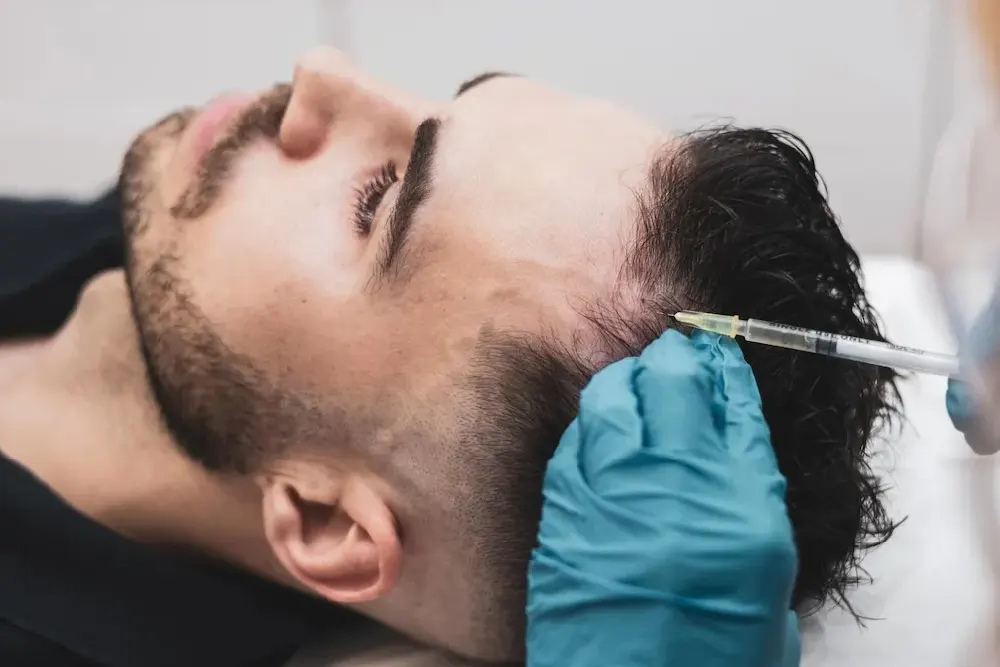Hair loss is a common concern that affects many individuals, impacting self-confidence and overall appearance. Fortunately, advancements in medical technology have led to innovative solutions for hair restoration, one of which is Follicular Unit Extraction (FUE). This minimally invasive procedure offers you the opportunity to regain a fuller head of hair with natural-looking results and minimal scarring.
Table of Contents
Understanding Hair Loss and Candidacy for FUE
There are various types of hair loss, including androgenetic alopecia and telogen effluvium, each with its own set of causes. It’s crucial to consult a qualified healthcare professional for proper diagnosis and evaluation of candidacy for FUE. Depending on the cause and severity of hair loss, alternative treatments may also be considered.

The FUE Hair Transplant Procedure: Step-by-Step
Pre-operative Consultation and Planning
Before undergoing a FUE hair transplant, it’s essential to have a thorough consultation with a qualified surgeon. During this consultation, desired results are discussed, and the suitability of the donor area is evaluated. Patients will also receive pre-operative instructions, including discontinuing certain medications and avoiding blood thinners.
The FUE Procedure Explained
FUE involves several steps, beginning with the administration of local anaesthesia to ensure patient comfort. Individual hair follicles are then meticulously extracted from the donor area using a specialised punch tool. The recipient site is prepared, and the extracted follicles are implanted, resulting in a natural-looking hairline and overall appearance.
Post-operative Care and Recovery
After the procedure, patients can expect some discomfort and swelling, which can be managed with proper wound care and medication as prescribed by the surgeon. Scalp tenderness typically subsides within a few days, while visible hair growth may take several months to become noticeable.
Pros and Cons
Follicular Unit Extraction (FUE) hair transplants offer numerous advantages over traditional strip harvesting techniques. One significant benefit is the minimal scarring associated with the procedures. By extracting individual hair follicles instead of a linear strip of scalp tissue, FUE results in tiny, dot-like scars that are less noticeable and easier to conceal, enhancing the overall aesthetic outcome.
Additionally, it yields natural-looking results by precisely placing each follicle in the recipient area, ensuring seamless integration with existing hair for a fuller and more harmonious appearance.
Moreover, the procedures typically entail a shorter recovery time and less discomfort for patients due to minimal tissue disruption and no sutures, allowing many you to resume their normal activities within days.
However, there are considerations to keep in mind when considering FUE hair transplants.
Firstly, the procedures tend to be more expensive than traditional methods due to the meticulous nature of individual follicle extraction. Patients should carefully assess the financial investment against the potential benefits of FUE before proceeding. Additionally, the length of the procedure may be longer compared to traditional methods, as each follicle is extracted individually, necessitating a more extended surgical duration.
Lastly, selecting a qualified and experienced surgeon is paramount for optimal results, as the skill and expertise of the surgeon significantly influence the outcome of the procedure. Thorough research and consultation with reputable surgeons are essential steps in ensuring the success of FUE hair transplants.
Living a Healthy Lifestyle for Overall Hair Health
In addition to considering hair restoration procedures, maintaining a healthy lifestyle can contribute to overall hair health. A balanced diet rich in essential nutrients, adequate sleep, effective stress management techniques, and proper scalp care are all factors that can promote healthy hair growth and potentially slow down hair loss.
Conclusion
FUE hair transplants offer you a viable solution for hair restoration with minimal scarring and natural-looking results. It’s important to consult a qualified healthcare professional, from a hair transplant clinic, to determine candidacy and discuss individual needs and expectations. By doing thorough research and exploring available options, you can make informed decisions about their hair restoration journey.

